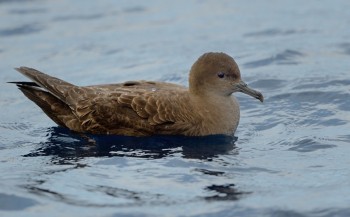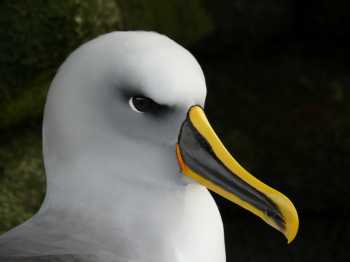Previously it was reported in ACAP Latest News that all the introduced Reindeer Rangifer tarandus had been removed from South Georgia (Isla Georgias del Sur)* in a two-phase operation over the last two austral summers (click here). Removal of Reindeer is expected to result in a return to a more natural vegetation cover on the island to the advantage of burrowing petrels, including the ACAP-listed White-chinned Petrel Procellaria aequinoctialis.

Reindeer in the Southern Ocean, photograph by Fabrice Le Bouard
A report on Phase Two of the eradication exercise published last month now reveals that at least eight animals (seen as a group of females and calves) remained in the vicinity of Barff Point (click here).
The report states “[s]ome additional searches and shooting of remaining animals will be needed in 2015 to ensure all reindeer are removed before the start of the final phase of the … rat eradication project. Based on estimates of the number of animals that remain, a decision will be made as to whether Norwegian marksmen will return or whether local personnel will be used instead.”
John Cooper, ACAP Information Officer, 22 June 2014
*A dispute exists between the Governments of Argentina and the United Kingdom of Great Britain and Northern Ireland concerning sovereignty over the Falkland Islands (Islas Malvinas), South Georgia and the South Sandwich Islands (Islas Georgias del Sur y Islas Sandwich del Sur) and the surrounding maritime areas.

 English
English  Français
Français  Español
Español 


